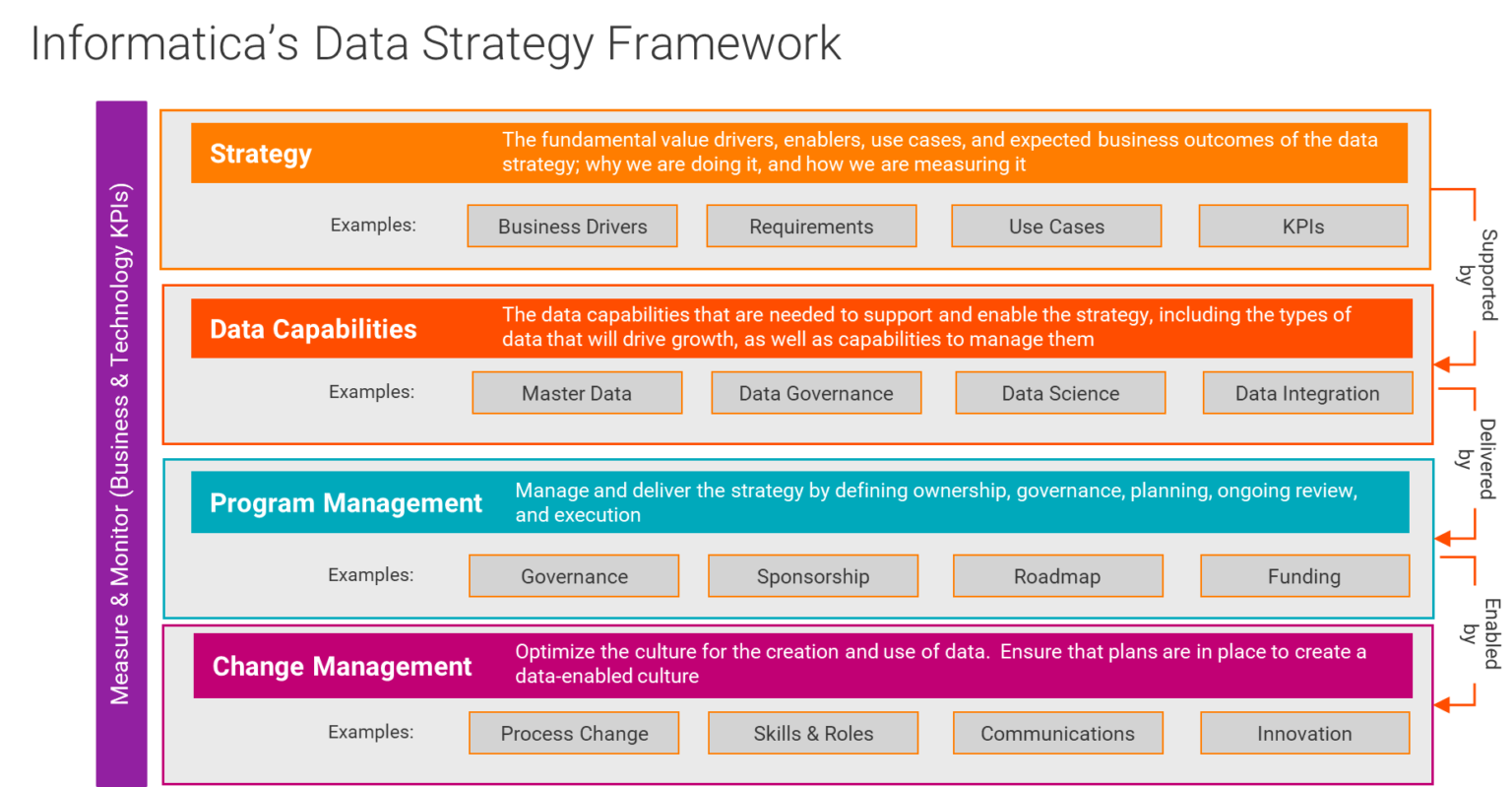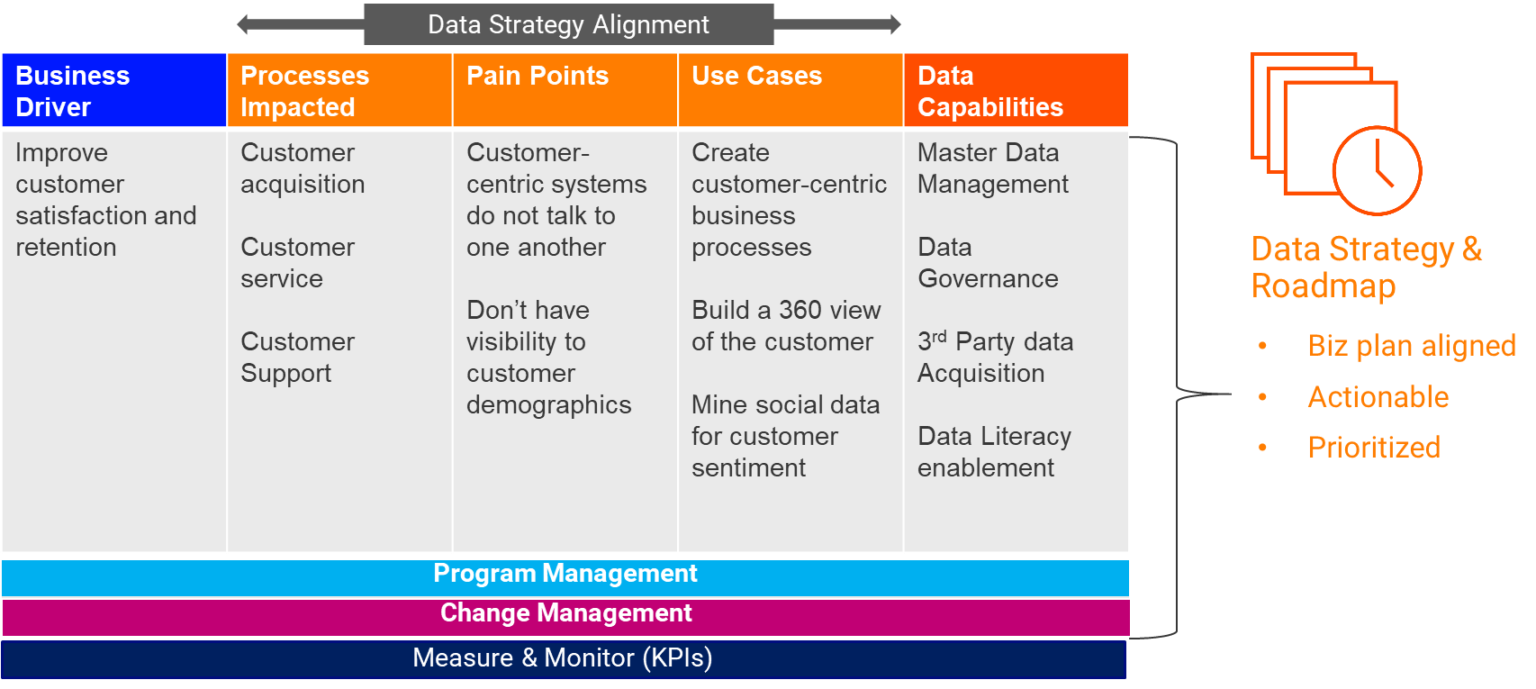Driving Data Strategy in the Digital Age: A Framework for Agility
“Life moves pretty fast. If you don’t stop and look around once in a while, you might miss it”

More than ever, we are drowning in data. Zeta-bytes are piling up daily and it appears that nearly everything we do in modern life generates more of it. How is a business to keep up?
Harnessing this data as an asset is more critical than ever; every business leader is thinking about using these reams of data to discover new business models and commercial opportunities, making back-office business processes more intelligent and self-learning, and embedding analytics into how we learn about and serve our customers in real time.
This is true in every industry. Consider these examples:
- An insurance firm crunches structured and unstructured data, from direct and indirect sources – to better understand their clients’ demographics and behaviors in search of the right balance of underwriting risk and associated premiums.
- A car rental company seeks to improve their customer’s experience and overall vehicle availability KPIs by cross-referencing on-board streaming vehicle data with individual maintenance shop performance and related employee skill sets, to identify gaps and opportunities.
- An educational content provider seeks to capture the usage and learning patterns of their students through online interactions with learning platforms, to provide adaptive solutions that tailor the pedagogy to the individual student needs and improve educational outcomes.
In the digital age, the business objectives that form the foundation of these activities, such as “Understand and serve our customers’ needs,” or “Provide a superior customer experience while maximizing shareholder value,” depend on a comprehensive data strategy that connects those overarching business goals to the underlying data capabilities needed to deliver them. Data strategy needs to prescribe the definition, discovery, integration, re-use, governance, and building of the data platform to not only future-proof your business but to provide a platform that can support the unhindered growth of your business.
Traditionally, the very concept of strategy implies long term. It suggests carefully considered growth objectives, SWOT analysis, scenario plans, market drivers, program roadmaps, and expected outcomes over a multi-year period. For business strategy, this is a time-tested approach. And traditional IT strategies seek to support this growth with similarly thoughtful technology strategies. These are typically often set with 3-year horizons, monitored quarterly, and revisited annually to ensure alignment.
But when it comes to data strategy in the digital age, businesses can’t afford to wait and only take the long view. There are too many new opportunities and changes are occurring in the data space every day, with too many ways to stream new data sources that are emerging, literally, every day. Internet of Things data streamed from every conceivable smart device, combined with externally sourced market and demographic data, plus internal fulfillment and transaction data, form a holistic view that can provide incredible insights to customer behavior. And some of this change is driving changes to the very business models themselves, in ways that require constant re-evaluation.
So how do we align these concepts? By thinking about our data strategy and executing it in the same way that we think about IT project delivery—an agile and adaptive execution within a strong guiding framework.
Start with a baseline understanding of what your business needs to grow, and how data capabilities should support that growth. A data strategy framework provides a logical structure for thinking about these essential building blocks for imagining your organization’s approach to data strategy. It spells out the categories of “ingredients” you must consider in order to construct the “recipe” of your strategy. At Informatica, we have developed a Data Strategy Framework which defines four categories:

To bring these categories to life for your company, we suggest that you initially follow a process of decomposing each business driver to the data capabilities that support it. This is often best achieved in a Workshop setting. In the example below, we identify “Improve Customer Satisfaction & Retention” as the business driver. Consider the processes that are impacted, relevant pain points, and use cases:

Repeat this exercise for each business strategy. With a collection of data strategies now in hand, you can compile it into a roadmap – identifying common capabilities supporting multiple business objectives, and mapping these for development according to business priority. Here, a laser focus on business value is essential.
Here’s where the agile part comes in. Once established, the data strategy requires regular re-visitation to keep it current, living, and relevant to changing business goals and rapidly evolving data capabilities.
Agile thinking promotes short sprints of targeted deliverables that align to predefined constraints, with constant evaluation of progress. For a data strategy to be truly responsive and nimble, it needs to be operationalized similarly. To achieve this, we recommend the following:
- Post your data strategy roadmap in a visible place. Discuss it daily with your program delivery team. Review it at least monthly with your sponsors.
- Lock in with your business’s strategies and how data supports them. Capture new drivers on a Kanban board. Categorize “offensive” and “defensive” opportunities and work them through the strategy process.
- “Think Big but Start Small.” Develop your capabilities in sprints: focus on small-scope projects that deliver targeted business value while also building out your enterprise data capabilities incrementally.
- Measure and report success continuously, at all levels of the organization.
With these tips in mind, you will be able to create an agile Data Strategy that moves and evolves organically with your business and keeps value and relevance at the forefront of the conversation.
For more information on Data Strategy or to learn how the Informatica Advisory Services team can help you develop one for your company, visit us here.








